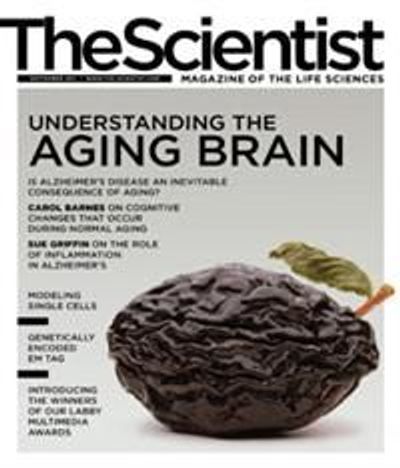 Corina TarnitaPORTER GIFFORD
Corina TarnitaPORTER GIFFORD
Corina Tarnita shrugged off her undergraduate mentor’s advice to take a year off before starting grad school in 2006. She instead raced through her program in just three years, even after making a midcourse switch from high-dimensional geometry to mathematical biology—a transition she describes as going from math that’s impossible to visualize to math that gives an account of the real world.
“With pure math, something was either wrong or right and you could prove it,” the now-28-year-old postdoc from Romania says. “With biology it’s not like that. It’s always a work in progress.”
METHODS: A three-time Romanian National Mathematical Olympiad champion, Tarnita was a shoo-in for Harvard’s math program. “She was one of only two math students in five years who was asked to stay on for graduate school,” says Martin Nowak, Harvard professor of biology and mathematics.
Midway through her PhD she read...
Tarnita began solving what Nowak considered to be unsolvable math problems, such as how interactions among individuals of a species determine the evolutionary trajectory of their populations. “Against my advice, she didn’t give up,” says Nowak. Tarnita discovered that for any population structure, a single mathematical variable can predict something as complex as whether individuals are more or less likely to evolve cooperative behaviors.2
RESULTS: Then Nowak introduced Tarnita to world-renowned evolutionary biologist E.O. Wilson. “Wilson, at 80, [had] decided that the inclusive fitness theory he embraced for 40 years wasn’t satisfactory anymore,” she says. “He needed proof.”
The theory, that cooperative and altruistic behavior among genetic kin benefits even nonbreeding individuals—such as worker ants—was proven mathematically by William Hamilton in 1964. Wilson decided to revisit this theory because Hamilton’s proof didn’t explain why the “eusocial” ant colonies he studied didn’t die out. Tarnita, Nowak, and Wilson showed that Hamilton’s theory—the basis of kin selection theory—was mathematically flawed.
DISCUSSION: Their paper proposed that, given sufficiently precise models of population structures, basic natural selection, without the need to invoke the concept of inclusive fitness, explains how eusociality evolved.3 The suggestion provoked intense professional criticism from the evolutionary biology community, which Tarnita took in stride, according to Nowak. “She sought out people on the other side of the debate to discuss the work, and they were disarmed. They tried to find mistakes. There was no mistake.”
Tarnita, now a junior fellow in the Harvard Society of Fellows, “is a mathematician of first rank,” says Wilson. During work sessions in his office with Tarnita and Nowak, Wilson says he would ask the Darwin bobblehead doll on his desk whether he agreed with everything they had just discussed. “And, of course, we got a strong affirmative.”
Literature Cited
- C.E. Tarnita et al., “Evolutionary dynamics in set structured populations,” PNAS, 106:8601-04, 2009. (Cited 23 times)
- C.E. Tarnita et al., “Strategy selection in structured populations,” Journal of Theoretical Biology, 259:570-81, 2009. (Cited 16 times)
- M.A. Nowak et al., “The evolution of eusociality,” Nature, 466:1057-62, 2010. (Cited 55 times)
Interested in reading more?




